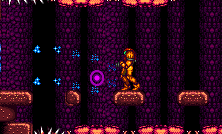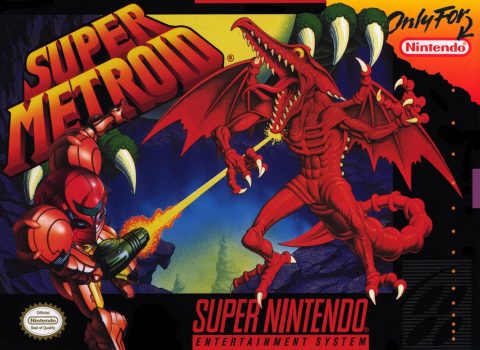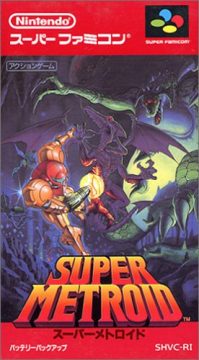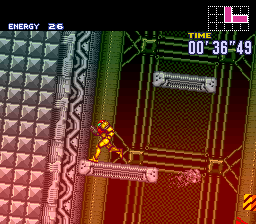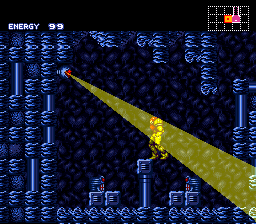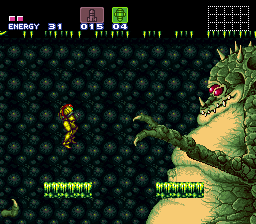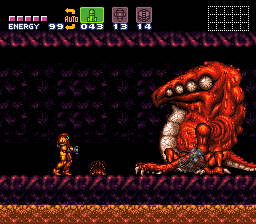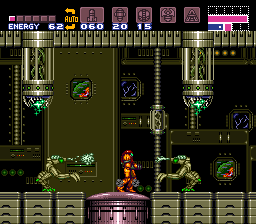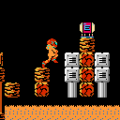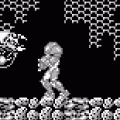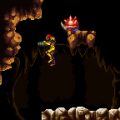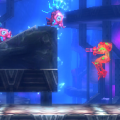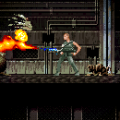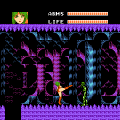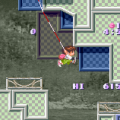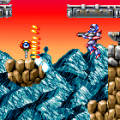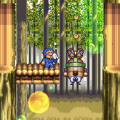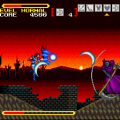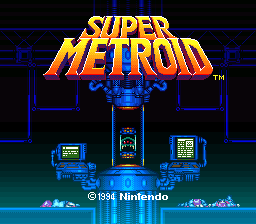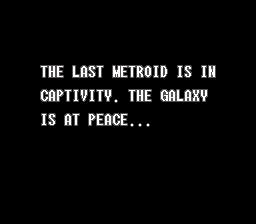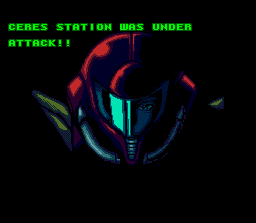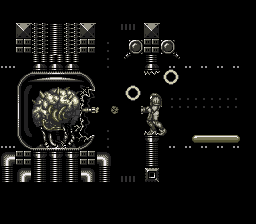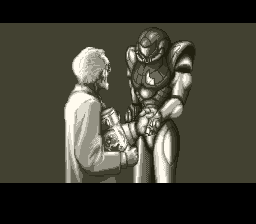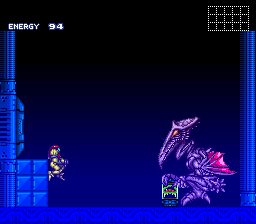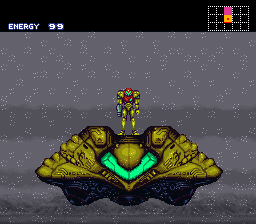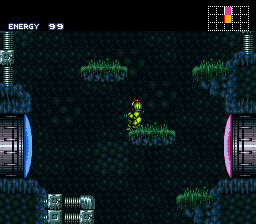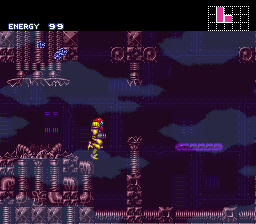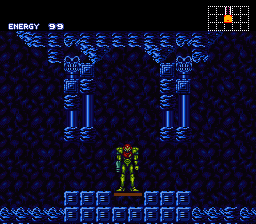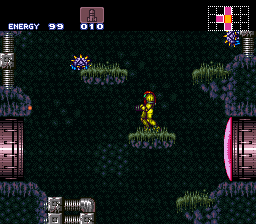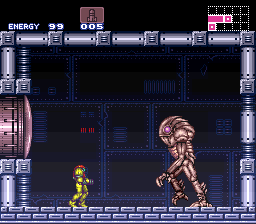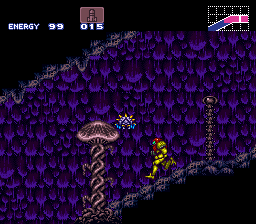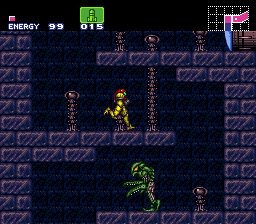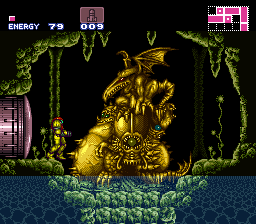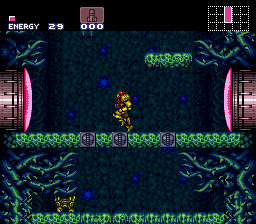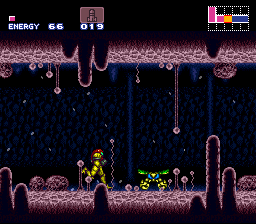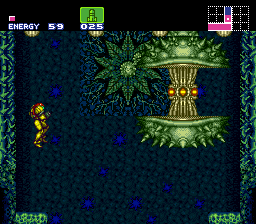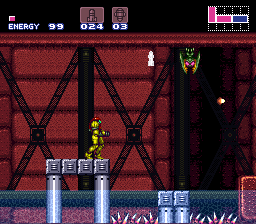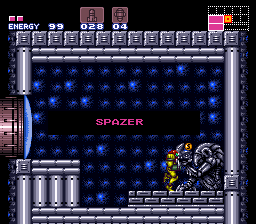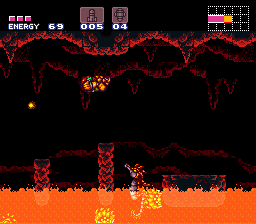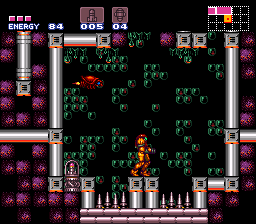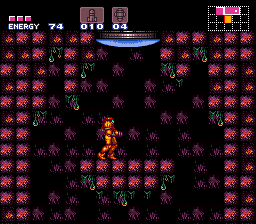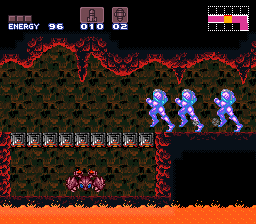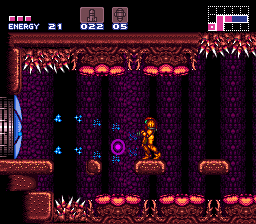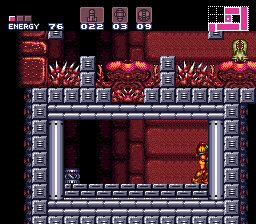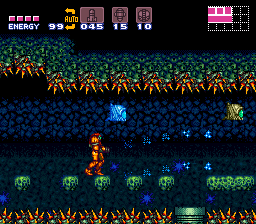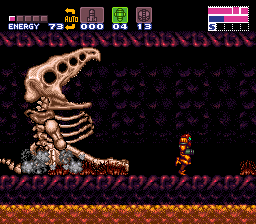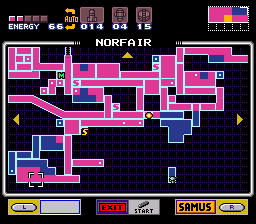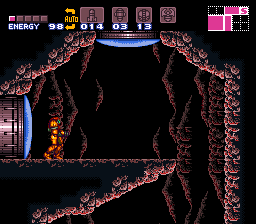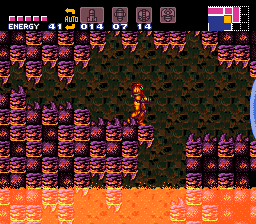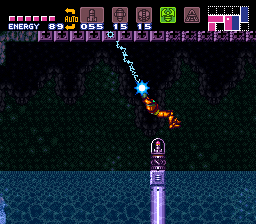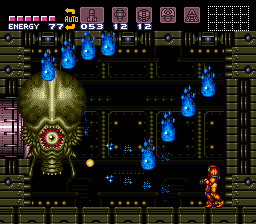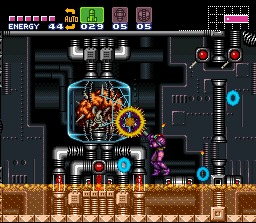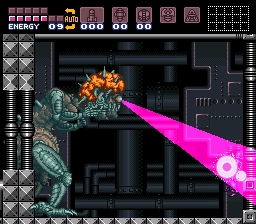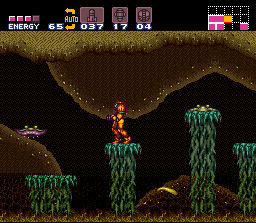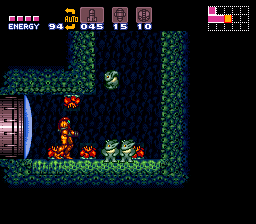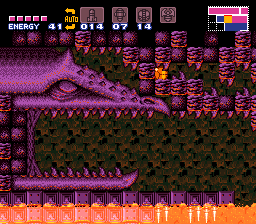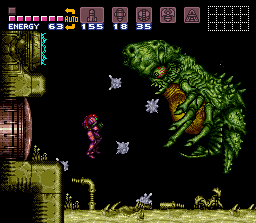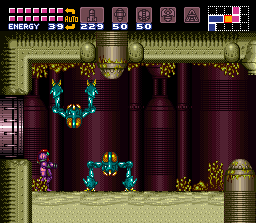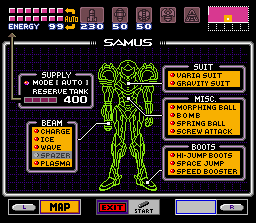During the SNES era, many developers were honing their crafts by iterating on ideas from the previous console generation. You can see this with the likes of The Legend of Zelda: Link to the Past and Final Fantasy II (and its sequels), which not only greatly improve in graphics and sound but also in scope and mechanics. And yet the greatest accomplishment was Super Metroid, a brilliant game that showed the developers had really studied what did and didn’t work with the first two Metroid games, and created a title that essentially established the Metroidvania subgenre as we know it.
Super Metroid is a little unusual for a Nintendo title, in that it actually acknowledges the previous games as part of a connected story. (See: The Zelda series as an example of them otherwise not caring much for these things.) Taking up right after the end of Metroid II, Samus delivers the baby Metroid she found to the Federation space research facility. This turned out to be a pretty bad idea, because as soon as she’s jetted off back into space, it’s attacked by the Space Pirates. Upon returning and docking, Samus explores the space station to find it mostly in ruins with the leader, Ridley, having captured the specimen. After escaping from the exploding facility, Samus takes chase back to the planet Zebes to (once again) defeat them and prevent the Metroid source from spreading.
These opening moments lean heavily on the player being familiar with the previous Metroid games, especially the first one. Once Samus lands on the surface, you’re taken down through an elevator, working your way back through the devastated remains of Tourian, and the areas where you had previously fought Mother Brain. You then end up back at Brinstar, in the area where you originally began the game. (There’s even an energy tank hidden in the same spot in the ceiling.) You’re routed back through the way you came, though, and then the new adventure really begins.
Despite these opening similarities, the rest of Zebes is completely different from the way it was in the NES game. There’s still Brinstar, now represented as an area overgrown with vegetation, and Norfair, still the land of lava, but there are few new areas: Crateria, the area on the planet’s surface; Maridia, which is mostly underwater; and the Wrecked Ship, the seemingly haunted remains of a crashed alien vessel. There are four main bosses now, including the return of Kraid and Ridley, plus two more for the new areas: Phantoon, a one-eyed ghostly floating head, and Draygon, a sort of insect/lizard hybrid. There are no longer lairs for these bosses though, as with the expanded areas, they would’ve been redundant.
Beyond the greatly expanded world, there are a huge number of quality of life improvements. The single biggest one is an automap, which lets you view everything you’ve explored, along with a mini-map to help navigation during gameplay. There are map rooms that will reveal part of a given area, giving some idea of your surroundings; the map also marks rooms with a circle if there’s an item present, giving you hints of where to look for goodies. Like Metroid II, there are regular save stations, and rooms to either replenish your health or restore your ammunition. The controls have been enhanced, so you can aim diagonally upwards or downwards (using the shoulder buttons), and you can even “moonwalk”, allowing you to walk backwards while still aiming forwards.
The amount of items and weapons you need to find have been drastically expanded, adding in much of the arsenal from Metroid II (including the Spazer and Plasma Beams, and the Moon Jump). You can combine several (though not all) beams into one, and can deactivate them at will. You can combine the Ice beam with the Spazer and Wave beam, for example, and since subsequent hits damage them rather than unfreezing them, makes it much less of a pain to use. New weapons include Super Missiles and Super Bombs, which unlock different kinds of doors in addition to the offensive benefits they provide. The Varia suit is now required to enter high temperature areas, plus there’s also the Gravity Suit, which will let you move smoothly underwater, otherwise your agility and jumping height are greatly limited. Also new is the Grappling Hook, which lets you latch onto certain blocks, as well as the X-Ray Visor, to hunt for hidden passages. The Speed Booster lets you run much faster, allowing you to zoom over collapsing blocks, and, when you’ve built up enough speed, crash through certain types of blocks. Once you’ve built up that speed, you can also stop dead in your tracks and leap in a certain direction, with that same level of destruction, in a tricky maneuver called the Shinespark. Also new are Reserve Tanks, which are extra energy tanks that are only filled if you gain health power-ups while your energy is already filled, and can be set to replenish your health automatically if it gets too low.
The atmosphere is impeccable, a perfect update of the feel of the original game while updating its specs for the 16-bit platforms. Outside of the introduction, which uses some fancy rotation and scaling effects, the rest of Super Metroid is fairly understated, but it’s still effective in its subtleness. Much of this is thanks to the brilliant soundtrack as well, giving each area a distinctive sound texture. While some jingles are reused from the original games, much of the soundtrack here is completely new. The booming drums of the Norfair theme, the chorales of the Brinstar theme, the triumphant, heroic sound of the Crateria music, where Samus’ ship is parked, all are legends of among SNES soundtracks. Even the boss themes are consistently excellent, even when they’re used in different ways – this is especially effective against the battle against the Spore Spawn, where the creepiness is accentuated by the plant monster’s quick and hypnotic movement patterns.
Almost everything about Zebes is brilliantly designed, both subtly leading you in the correct direction while teaching you how all of the items work, as well as giving slight glimpses of what powers you might get later on. Right at the beginning, you’ll find tons of blocks that can’t be destroyed or doors that can’t be opened, teasing you of what’s behind them until you can revisit them when properly equipped. While there are map rooms, which will display (most) of a given area in your automap, there’s still plenty to explore on your own, while the game rarely gets you too lost. For example, near the beginning of the game, you’re dropped into a pit that is seemingly inescapable. The only clue is that there are little unkillable bugs traveling back and forth. Of course, this telegraphs to anyone familiar with the original Metroid that you can’t get out until you find an Ice Beam, which will let you freeze them and climb out, but even those without those knowledge will eventually realize that you need to push forward before you can go backwards.
Finding most of the missiles and energy tanks in the first two Metroid games was mostly of matter of being thorough – explore everywhere, and bomb everything. Super Metroid is much smarter, by removing the tedium and instead asking you to put your mind to the test. Though there’s still plenty of secret stuff, many of the hidden items are given as rewards for solving fairly simple environmental puzzles using your various moves and weapons. It ends up being much more satisfying, even if the reward of just a few more missiles isn’t necessarily all that special.
There’s nothing in the way of tutorials outside of the opening demo, which gives some clues to the various powers of your arsenal. Instead, you’re supposed to learn from the environment. Despite Zebes being largely hostile, there are a few friendly animals which will demonstrate various abilities, including a wall jump move that’s rather difficult to use consistently, but is required in a handful of areas. In another spot, there’s a door way out of reach, but a number of bricks that can be destroyed using the Speed Booster, so you’re supposed to put together that dashing will also let you jump up to much larger heights than you’d normally be able to. It also rewards creative thinking – right after you get the Super Bombs, you backtrack through a glass tube that runs through water. Though the game never explains this, you might be tempted to see if the Super Bomb does anything here – and it does! It’ll crack the glass and let you explore the flooded area around it, giving you a glimpse of Maridia. (Though at this point in the game, you can’t actually do anything until you get the Gravity Suit.)
Throughout the exploration, there are tons of memorable moments when dealing with tricky rooms or boss monsters. Easily the most memorable is the fight against Crocomire, a lizard-like creature which seems impervious to damage, but can be forced into lava by driving it to the edge of its platform. You think it’s dead and then you turn around and walk a few steps…then it pops out to attack again, only to have all of its flesh melt off and its skeleton fall harmlessly back in the lake of fire. It’s actually surprisingly grotesque for a Nintendo game, even though there’s no real blood. The battle with Kraid is much more elaborate than before, seeing as he’s grown from a monster about the size of Samus into a gigantic dragon that’s the size of two screens. The game even plays a few tricks on fans from the old games – one of the early Chozo statues, rather than giving you a power-up, instead comes to life and attacks!
There’s also the final encounter with Mother Brain, who is no longer content to just sit around in a jar and now has its own hulking, mechanical body. She is impossible to beat, and an undodgeable attack seems like it will completely wipe out Samus…until the baby Metroid, now grown to gigantic size, swoops out from behind the scenes and saves her mother figure, giving her the energy to fight back. As expected, the game ends with a timed escape sequence (with an alternate quest to help save the friendly creatures who demonstrate your abilities), with your complete time and item obtained percentage giving you an incentive to explore or replay the game. As with the other games, these play into what kind of outfit Samus appears in at the end.
Super Metroid is an almost perfect game, with the only real nitpicks being some small tweaks made in later Metroid games or other similar titles. Samus moves a little slow to the way she does in Metroid Fusion and Metroid Zero Mission, plus the ability to grab ledges in those games makes navigation in vertical areas much quicker, so it’s definitely missed here. There aren’t any warp devices or any way to quickly move around the map – not so much a problem through most of the main game, since you’re generally guided of where you’re supposed to go, even when backtracking, and the disparate areas do connect with each other at a few points. But, it would’ve helped in the late game, when you have all of the powers and are looking for all of the extras that you couldn’t get before. In general, the difficulty level is fairly low too, as the boss fights are well designed but fairly easy once you know what you’re doing. However, none of the later games really have as many memorable moments as this one, nor as consistently excellent soundtracks – the fact that many continue to arrange and remix the music from this one speaks to its quality.
Super Metroid’s eloquent design has inspired so many other developers and games (including Castlevania: Symphony of the Night, which together created the “Metroidvania” label), and the fact that it still stands up tall next to those, many created decades later, is a testament to its everlasting appeal.
